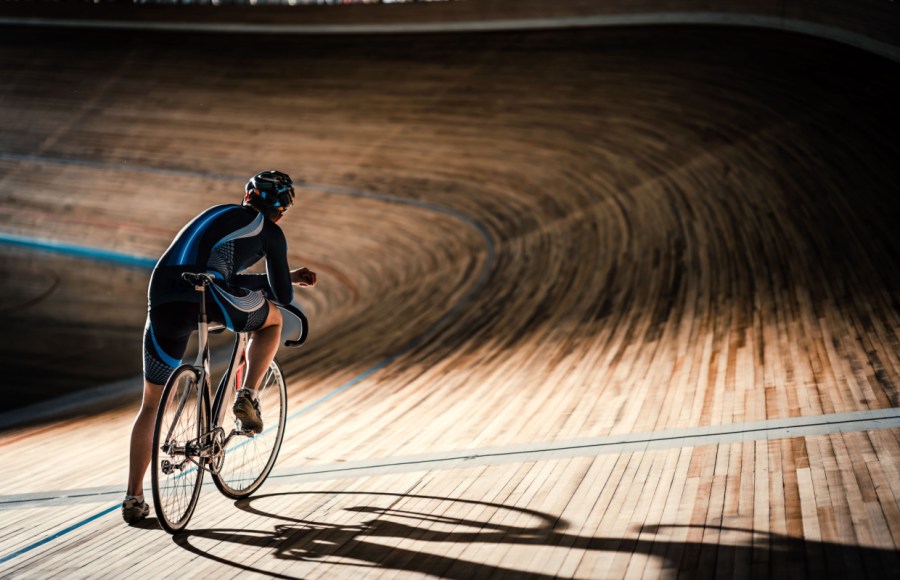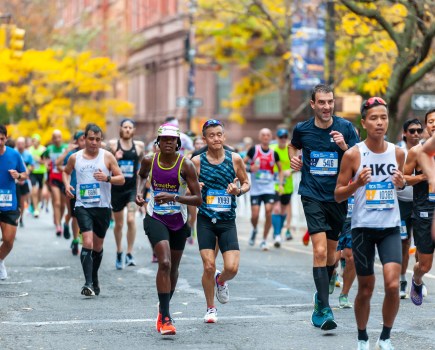Start your track cycling journey with our step-by-step guide.
Cycling is a great form of cardiovascular exercise that is low-impact and relatively accessible. It can also be done solo or part of a group, like a cycling club. Simply don your best cycling shorts, grab your bike and you’re good to go. There isn’t one type of cycling either, and there are disciplines as varied as track cycling to the adrenaline-fuelled downhill mountain biking to suit all interests.
The former is seen as the sport’s purest form, with participants riding a bike with no brakes and gears (or rather one fixed gear) around a velodrome (essentially an oval circuit with banked corners). Whether you’ve seen it on TV and want to give it a go or are looking for a fun way to stay fit, here’s how to get into track cycling.
Find your nearest velodrome
There are a whole host of indoor and outdoor tracks dotted around the UK. But, the only official online resource to help you find your nearest track is this guide from British Cycling (which was last updated in 2019), so if in doubt, your best bet is to turn to Google. For all-weather riding, the six indoor tracks in the UK are:
- Derby Arena, Derby
- Lee Valley VeloPark, London
- Manchester Velodrome, Manchester
- Calshot Velodrome, Southampton
- Geraint Thomas National Velodrome of Wales, Newport
- Sir Chris Hoy Velodrome, Glasgow
Sign up for a taster track session
Most velodromes around the UK offer a taster track session where you can turn up and give track cycling a go to see if it’s something for you. “We make it quite easy at Herne Hill Velodrome,” says the south London venue’s cycling development manager, Thea Smith. “It’s just £20, we run them every single week. You don’t need any special equipment – you just need to be able to know how to ride a bike.” While any sports clothing will be fine for your first session, a good cycling jersey and pair of cycling shorts will make the whole experience a lot more comfortable.
At the taster, participants learn how to ride a track bike and get used to using their pedals to control their speed – the fixed gear means that you have to slow the pedaling cadence to brake. “We build up your confidence on the bike before going onto the track and learning how to ride up banking. We also get into some more things that start to look a little bit like track cycling. For example, riding closer to people and something called half-lap changes. This is where you’re in a line and move from the front of the line to its back.”
Complete your track cycling accreditation
Before you can start racing or sign up for more advanced skills training, most velodromes will require you to have passed a level of track cycling accreditation to ensure you’re ready to progress safely. There isn’t one set track cycling license or exam to undergo, but all work in a roughly similar way.
“After your taster session, you come back for track skills sessions, and build up more knowledge”, says Smith, with the coaches instructing you on group riding, bike handling, observation skills, and general fitness.
There isn’t a set number of skills sessions required before you’re ready to take the track cycling accreditation exam. It can also depend on your level of experience. “For people that don’t generally cycle in their day-to-day lives, we suggest half a dozen to a dozen track sessions before you move up the pathway. We do have something called a fast track for more experienced cyclists. This is where we book it as a block and you only end up doing three track skill sessions before giving the training accreditation a go. But, they are more intense and focused sessions.”
Once you’ve passed your track accreditation, you’re free to move on to the more advanced training sessions. Here, you start to work your way towards racing.
Related content:







